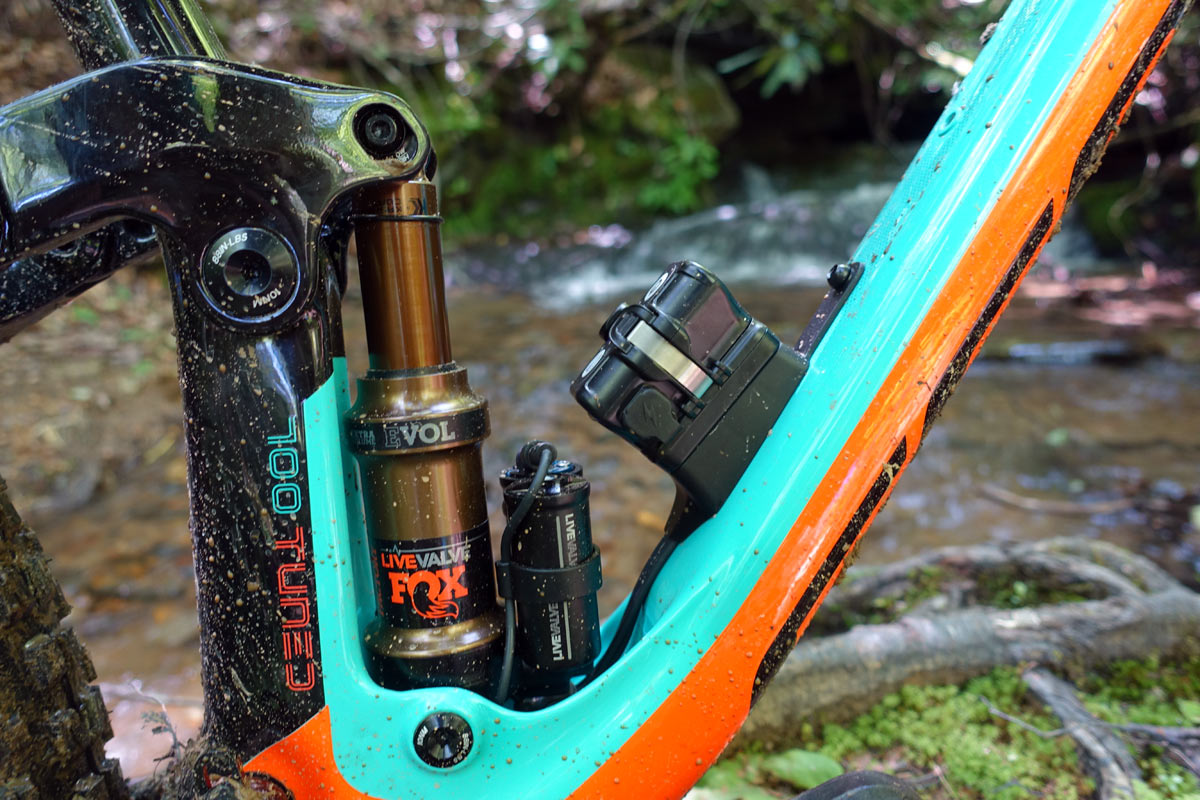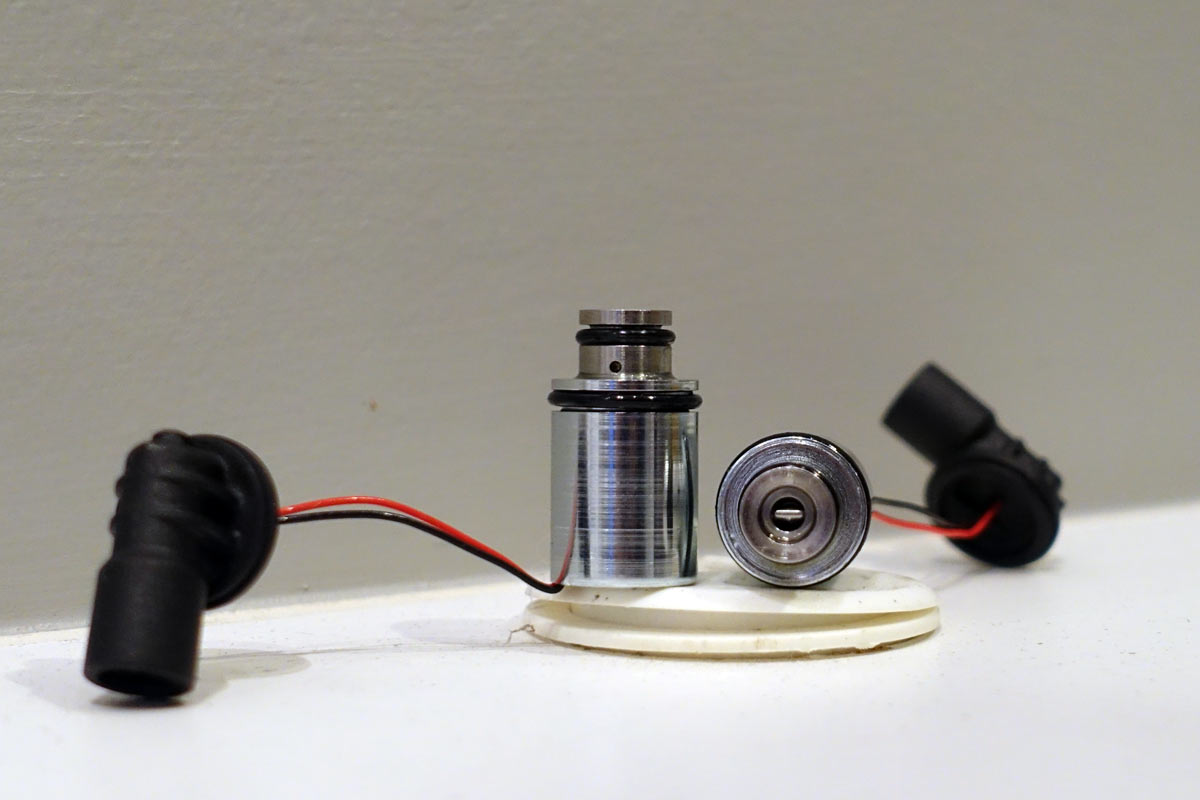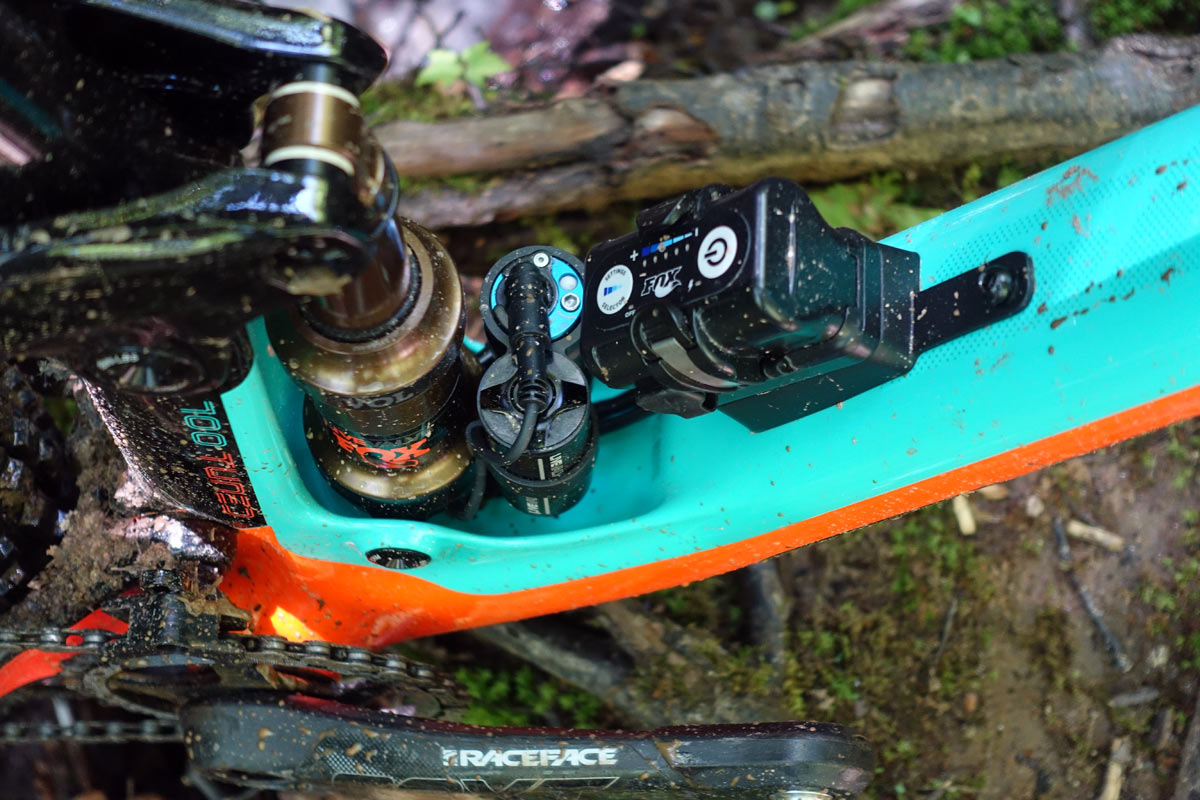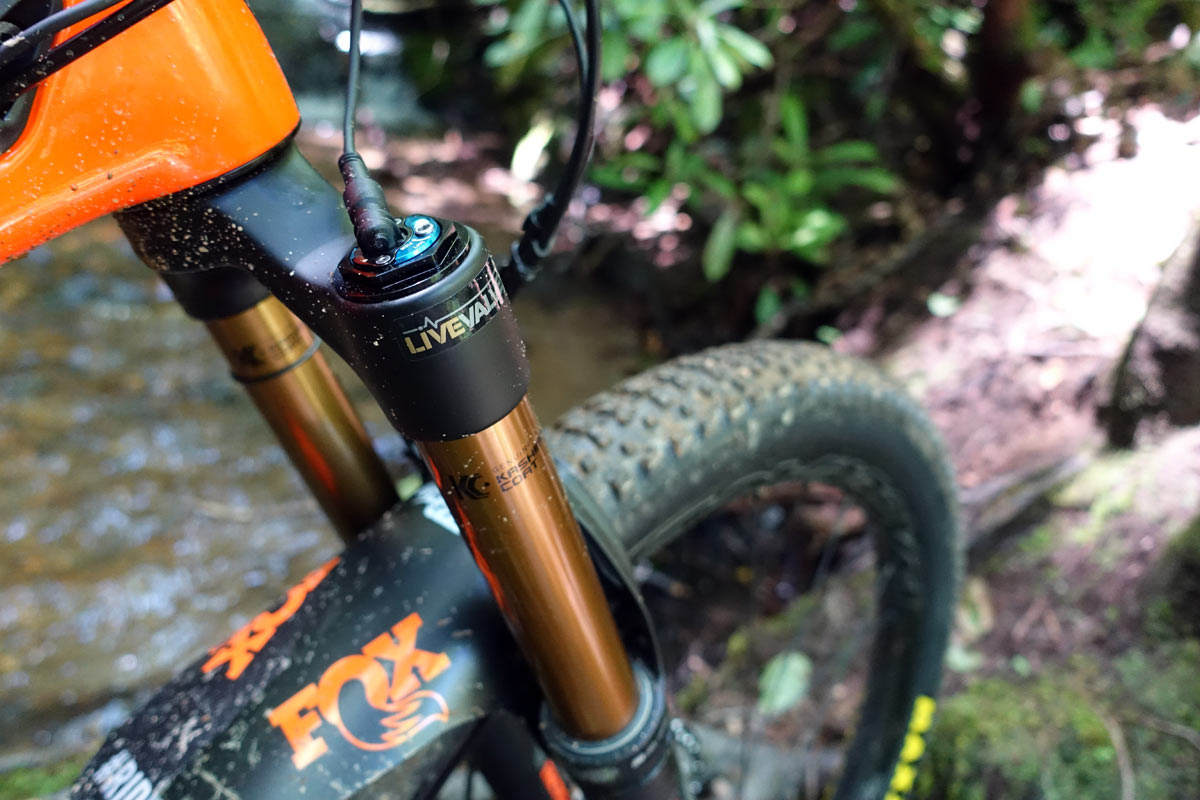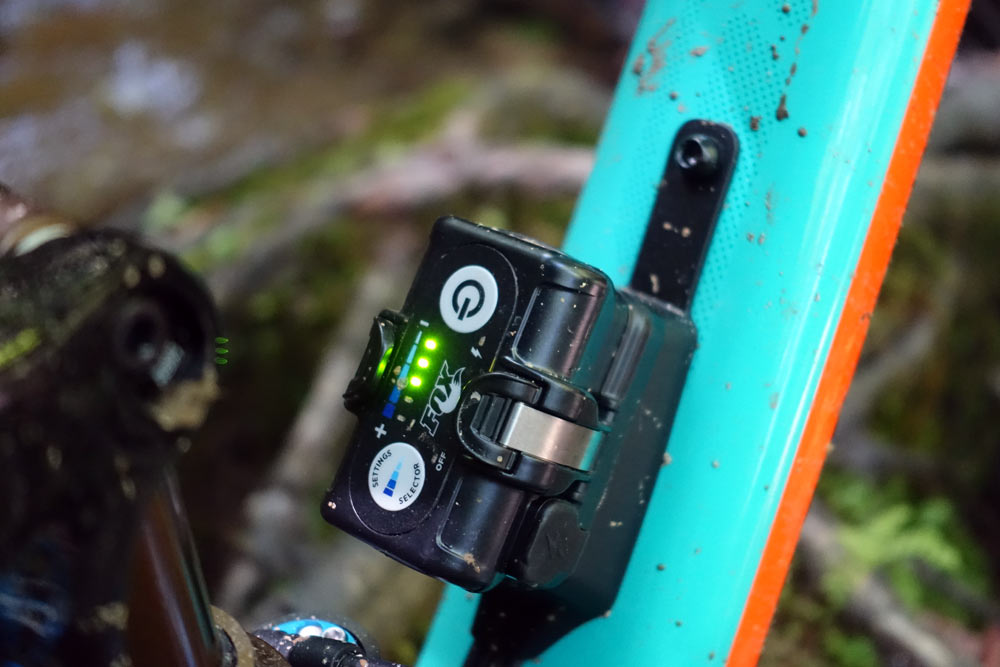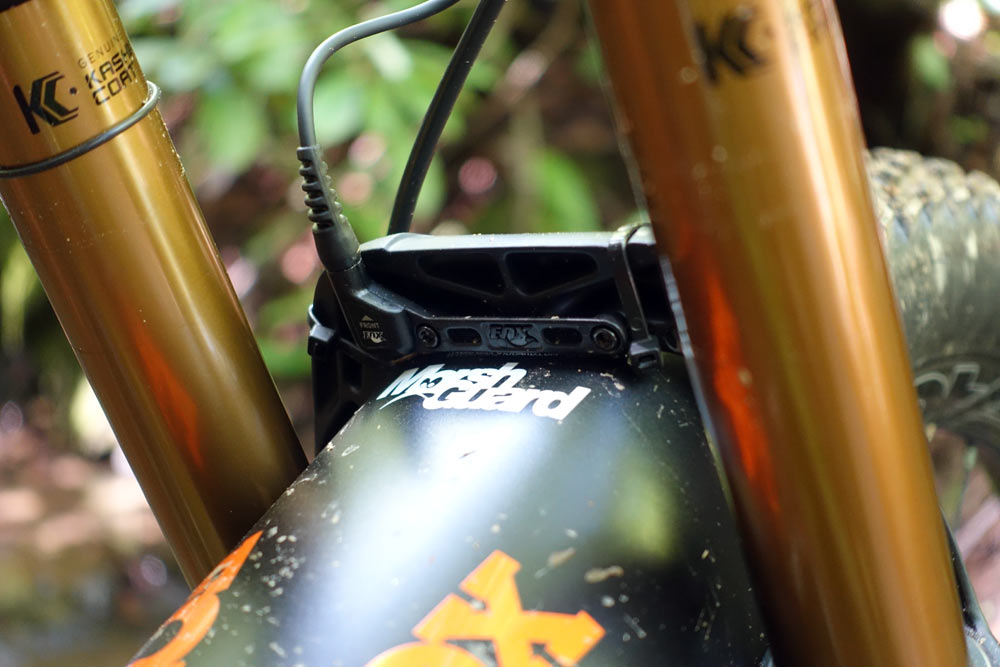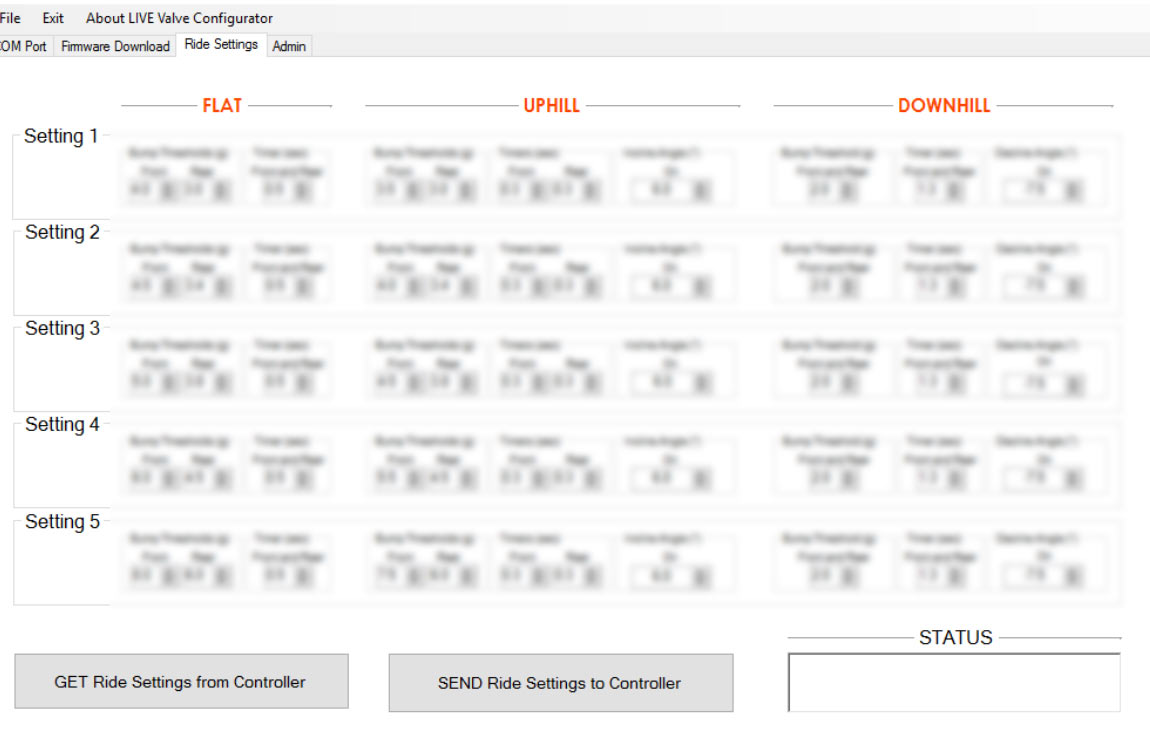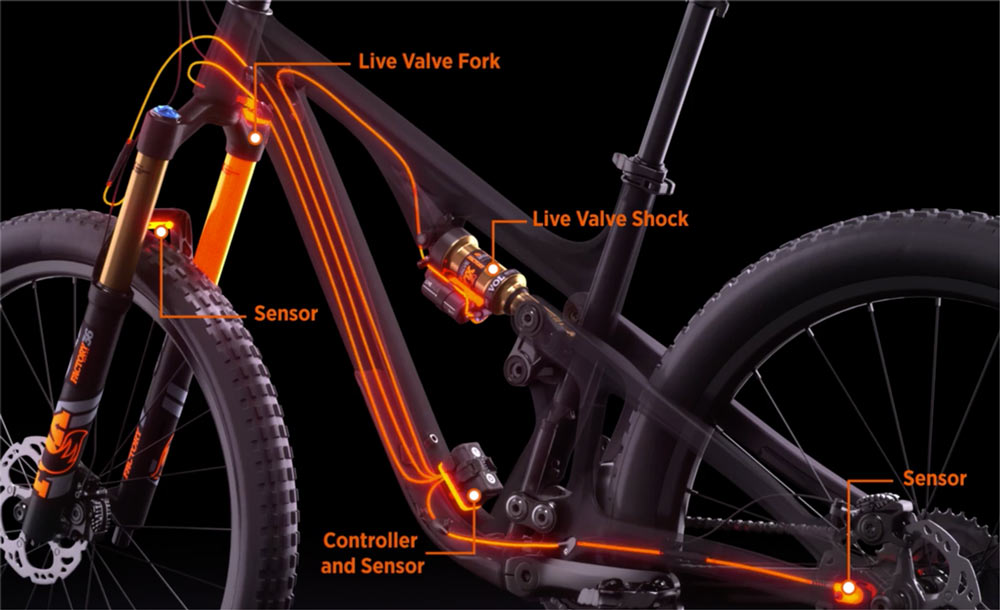While some bikes have literally been ready for this for four or more years, Fox wanted to make absolutely sure the system was ready for prime time. After all, the new Fox Live Valve electronic compression damping system is being asked to monitor the terrain 1000x per second and make adjustments in 3 milliseconds. That’s 100x faster than the blink of an eye. In real world terms, that’s so fast that the sensor on the fork detects the impact and opens the compression valve before you feel it at the handlebars. It’s the fastest valve they’ve ever created.
It also detects how you’re riding and adjusts accordingly. Pitch detection knows the you’re climbing, traversing or descending and adjusts accordingly. Dive into a corner and it’ll firm up a bit so you can rail it then power out of the exit. Airborne? It’ll open things up to absorb the impact.
The goal? Perfect suspension performance with out you ever having to touch a dial.
How does Fox Live Valve work?
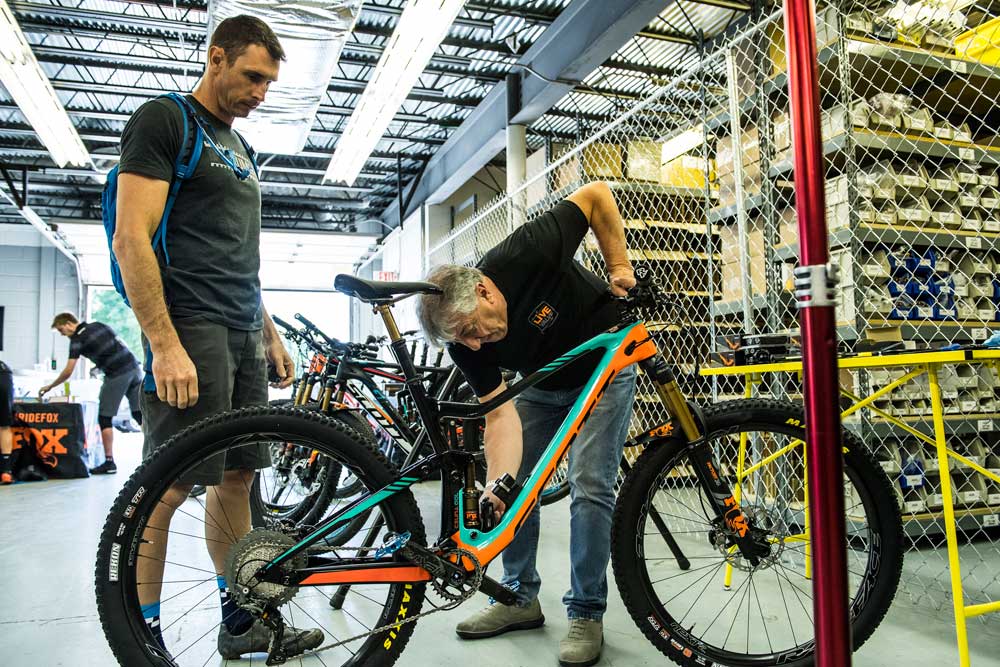
For years, Fox has tried all manner of designs and technologies to get closer to this. From the brass mass in their Terralogic forks to the iCTD and FLOAT iCD electronic remotes. The latter used a Di2 battery, but the new Live Valve gets its own battery with integrated controller. To finally get where they wanted to go, they came up with the following design considerations:
- Light weight
- Low power consumption
- Fast valves in a very small package
- Requires new technology they would have to build from scratch
- Would require new data on how the suspension would act
- Water bottle clearance and various shock mount designs to fit most frames
- User friendliness
The system, in a nutshell, is an magnetically activated compression damping valve controlled by a micro-computer which uses sensors to detect movement at the fork and rear axle. Hit a bump and the system opens the valve, switching from “closed” to “open”. How “closed” or “open” those settings are is mostly up to the bike manufacturer to specify for each specific model, but the “open” has an additional external adjustment for you to fiddle with. How much force it takes to open the valve is also user adjustable.
The heart of the system is a small Latching Solenoid, which requires just a 25 millisecond pulse of electricity to move. It’s then held in the open position with a magnet, and the closed position with a spring. So, there’s no power consumption to hold it in either position. To close it, the system turns on a small electromagnet to cancel the permanent magnet so the spring can push the valve back to the closed position. It’s either open or closed, there are no intermediate (aka “Trail”) positions because those would require constant power to hold it in those positions.
Why not just put a motor on the compression knob? Two reasons. First, that, too, would use more power to turn, and on bikes we’re limited to how much battery weight we want to carry around. Second, speed. That would be too slow to adjust and react. So they had to completely redesign the internal valving and shim system to work with a different type of mechanism.

The same system is used for the fork and the shock, only the valving and carrier parts change between models (34 versus 36, etc.).
Sounds simple, right? Almost limiting? There’s more to it. The electronics allow them to do waaaay more with those two positions than you could ever do flipping a manual switch back and forth.
Fox Live Valve parts and tech
The Live Valve controller is attached to the frame and contains the microprocessor with their algorithm and sensors for incline, jumping and free falling. These sensors work in tandem with the wheel sensors to decide how and when to adjust the damping.
The battery is a 2-cell 7.4V 800mAh unit (which is the same as a Di2 battery, just not the same shape…more on that later), and contains all of the charging circuitry and settings buttons. It charges with a USB cord, and can be removed for easier indoor charging and travel. Five LEDs show setting status, another shows power status. There’s a setting button that cycles from 1 to 5, plus a power button.
Another benefit is that it keeps the cockpit much cleaner. There’s no levers or switches. And you don’t have to reach down to flip your shock or fork on or off, which can not only be dangerous, but also a pain in the butt and often slows you down while you stop pedaling to mess with it.
Fox estimates it’ll make about 480 adjustments per hour during a typical ride. That’s eight times per minute, or about a hundred times more than you’re likely to switch on your own.
The bump threshold setting lets you adjust to how hard of an impact it takes to open the system. Setting 1 is extremely sensitive and will react to almost any little thing. Setting 5 takes a much larger impact.
The default is a firm suspension, opening up only when you hit a bump or when it detects your airborne. It’ll return to closed about half a second after the last impact during normal riding, but knows to remain open during air time or free fall. So, no, it won’t firm up on you while you’re in the air. But it will go back to firm as soon as you’re through a rough section. Because, typically, the bumps are coming at you in rapid succession, it’ll stay open. The actual amount of time it stays open depends on both the setting you have it in and the mode it’s put itself in based on whether your climbing, traversing or descending. Naturally, it keeps it open longer during descending, which not only is the right performance benefit but also reduces power consumption. Check the video at the bottom of this post to see that in action.
Wheel Sensors are single-axis accelerometers that only read vertical wheel movement, measuring acceleration from bumps. One sensor mounts to the fork’s arch, and the rear sits on the chainstay as close to the rear axle as possible. And they can work independently of each other, which is good for climbing. Imagine you’re chugging slowly up a steep grade and your front wheel hits a rock and a second later your rear wheel hits it. If both fork and shock reacted at the same time, you’d end up with a weird rear sag before it hit, then another softening when it actually hit the rock. By adding pitch detection and letting them operate each end of the bike separately, it lets it perform that way it should.
The system will automatically shut down after 1.5 hours of no bump detection, at which point it opens the suspension. Before your next ride, you’ll need to turn it back on. They opted not to have an “auto on” function because they didn’t want it to turn itself on while you’re transporting your bike on a rack or in the car. Why 1.5 hours? Because if you’re riding up a long road climb to get to the trailhead, you don’t want it to turn itself off…and the chances that your climbing for more than 90 minutes is pretty slim.
Oh, and if the batteries dies while riding? It simply opens the system up so you have normal open suspension.
Can you tune Fox Live Valve yourself?
The short answer? Somewhat. You still have your standard air suspension adjustments: External rebound knob, air pressure and air volume. There’s also a dial to let you adjust how open the “open” setting is, similar to the current 3-position Fox forks and shocks. And you can choose the bump threshold setting for the Live Valve. But the real tuning of how and when the system opens and closes is done before you ever get your hands on the bike.
The chart above shows just how many conditions and parameters the bike manufacturer can tweak for each bike. They can dictate things like impact force, return time, lag time between fork and shock, incline and decline angles, etc., and they can do that for all five settings and all three modes. The OEMs can also update the tune, then push that update out to dealers, who can then update the firmware on customers bikes.
Depending on the bike, the algorithm will change based on how and where the controller is mounted. On a Pivot, the unit is upside down, so it needs to know how it’s oriented. And each frame will have a slightly different mounting point for the rear wheel sensor. Fox is able to tune the algorithm for each manufacturer and frame. On top of that, the bike manufacturer can request certain tuning parameters, setting the firmness and openness of each setting. This will depend on the type of bike. XC bikes probably want to be firmer in firm, where as a long travel bike probably doesn’t want to close things up too much or the difference between closed and open could be too dramatic.
OK, but why?
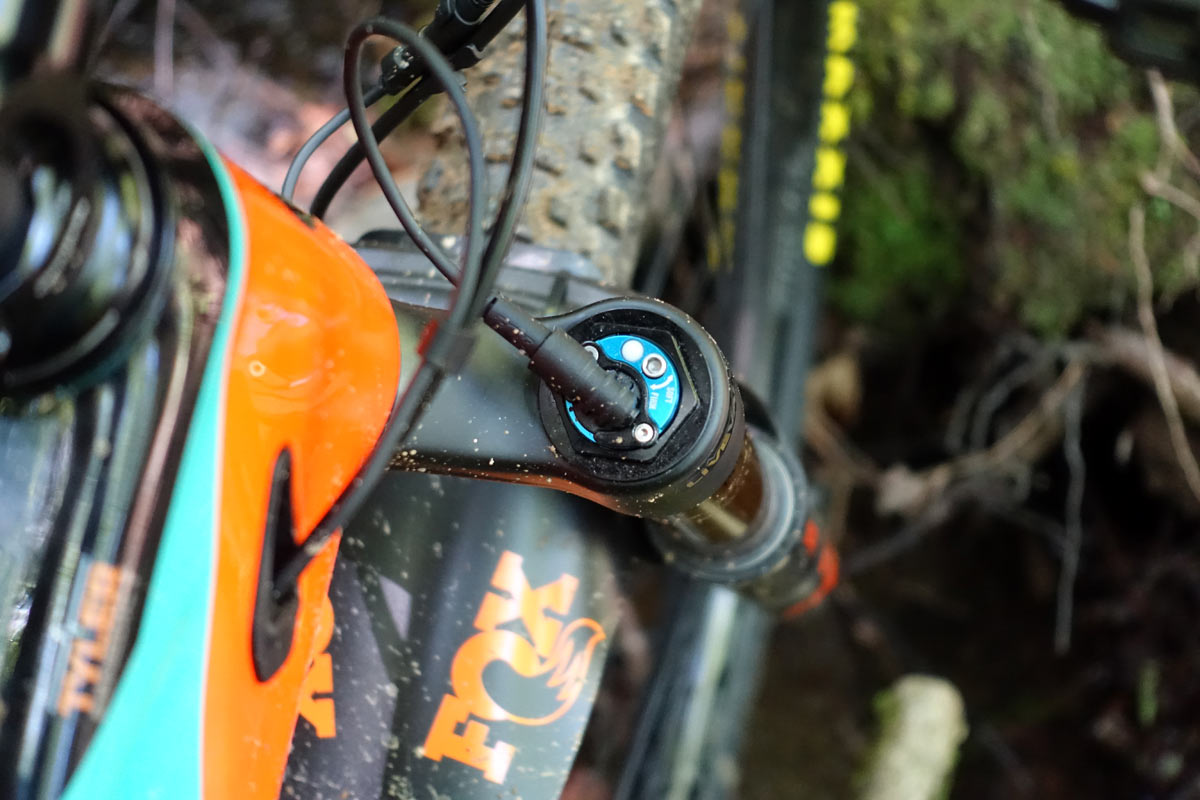
Beyond simplifying optimized performance, it also provides consistency. You just hop on and ride and it should perform predictably in every situation. No more forgetting to lock out or open up your suspension before a climb or descent. It’s just a seamless transition between settings that are perfectly set for every situation – XC, Trail, Enduro and Downhill.
And it’s very well thought out. The plug leading to the fork, which is really the only one that’s exposed, pops out easily in case you wreck, then pops right back in. It’s also IPX7 waterproof, and a mere 15 minute charge will give you 1.5-2 hours of riding. A full charge takes just 2 hours, and if you forget to charge it, the system just remains open so you still have all your travel. Considering all the tech, it doesn’t even add that much weight – the battery is just 72g, the controller + sensors are 104g, and the shock is 466g (185×55 trunnion mount). The Live Valve fork damper is 249g. Total new, added weight, though, is only about 144g compared to a bike with traditional fork and shock and a cable-actuated remote lockout.
It does use a different cable connection than Shimano’s Di2 battery, but their goal is eventually to make it compatible. And there’s a chance they’ll open up that configurator to the masses, with our strong recommendation that it includes a “Reset to Factory Settings” button in case you do more harm than good.
Video overview of Fox Live Valve:
Now that you’ve read all that, here it is in video form, with a bit of riding action and illustration of how the different open/close speeds work based on whether you’re climbing or descending.
How much will Fox Live Valve cost?
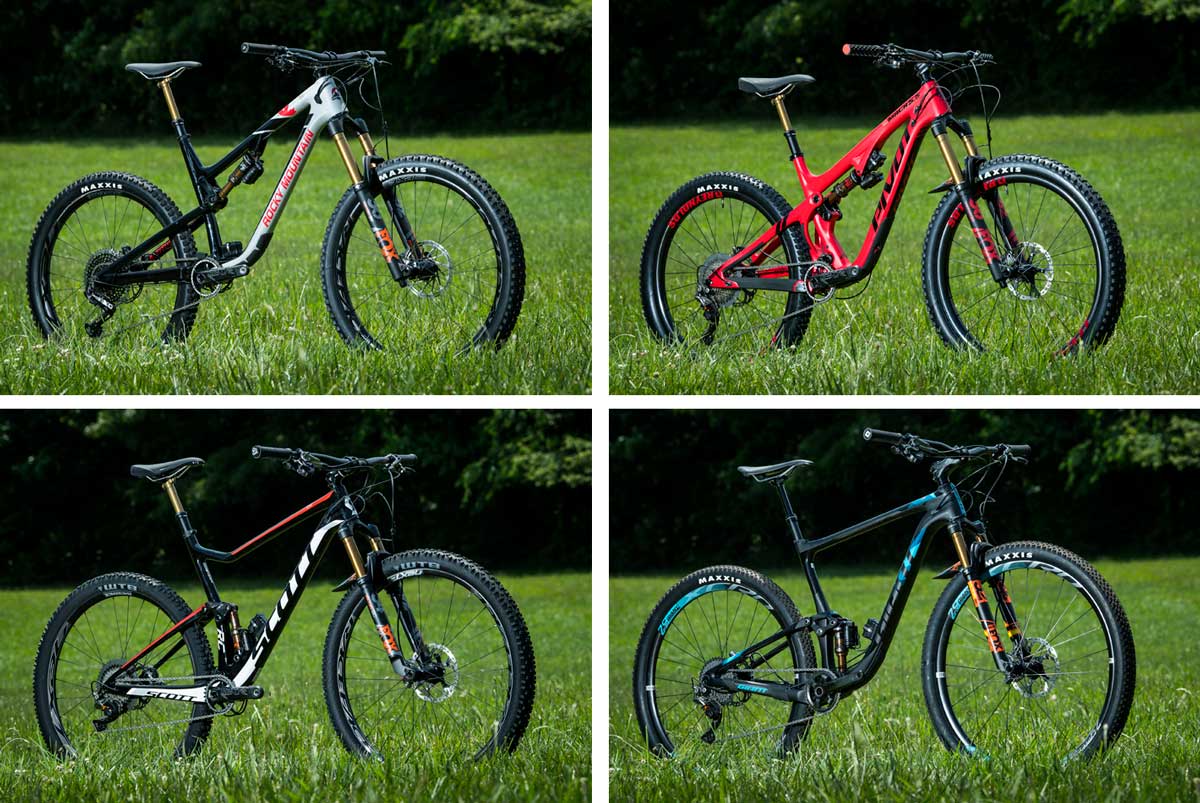
Giant, Pivot and Scott will offer complete bikes this year, Rocky Mountain and Pivot both have frames on the market that are ready for it, and Niner and others have Live Valve compatible bikes coming soon. While individual brands will price it how they want, Fox says you’re probably looking at as much as an $1,800 upcharge on a complete bike. Or around the same difference between bikes with mechanical versus Di2 shifting…maybe.
Want to add the system to your existing bike? Assuming it has the mounts for the sensors (most newer compatible Fox forks will, it’s mainly the frame you need to check), you can. The aftermarket price for the complete system varies based on which fork you choose, ranging from $3,000 (Fox 32 SC) to $3,000 (Fox 34) to $3,125 (Fox 34 SC) to $3,250 (Fox 36). If you opt for the 36, you’ll have your choice of a 29er up to 170mm travel, or a 27.5″ with up to 180mm travel. The shocks all come with the EVOL canister and are available in standard, metric and trunnion mount options.
Check out our ride review to see how it works out on the trail!
